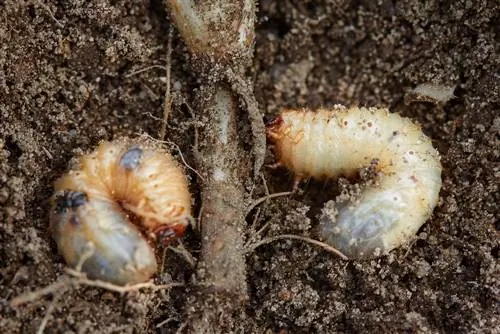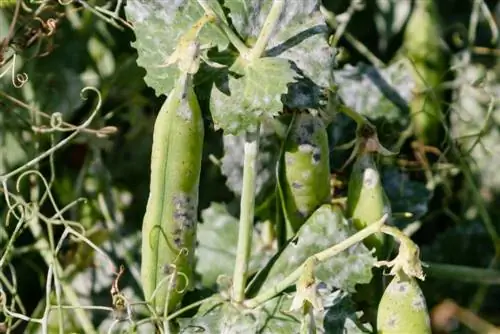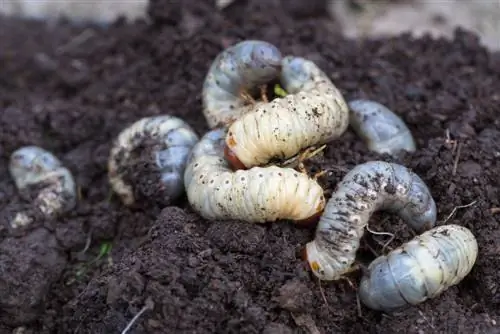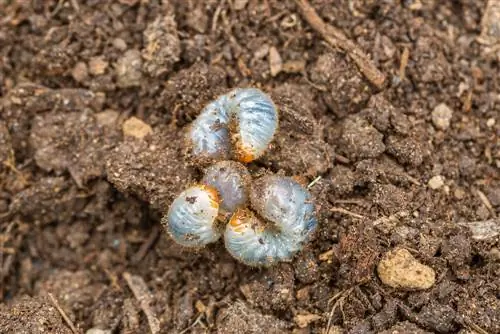- Author admin [email protected].
- Public 2023-12-16 16:46.
- Last modified 2025-01-23 11:22.
Grubs are often a nuisance in themselves because they damage garden plants almost invisibly at an underground level. An infestation in raised beds can be particularly annoying because of the targeted crop planting. But the pests can also be de alt with in raised beds.
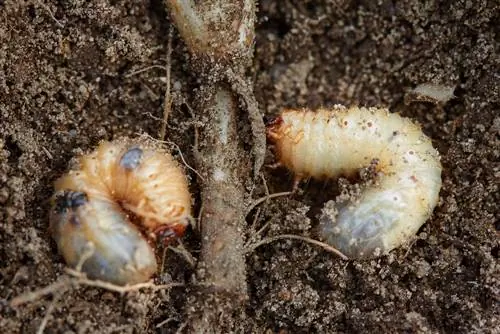
How can you combat grubs in raised beds?
To combat grubs in raised beds, you can remove the larvae by hand or replace the soil before planting. With existing plants, simulate rain to pick up grubs on the surface, or use predatory nematodes as a natural enemy.
Identifying grubs in raised beds
If you discover curved, whitish larvae when preparing to plant your raised bed in spring, you are usually dealing with harmful grubs. The beetle species, whose larvae feed on the roots of living plants, also tend to lay their eggs in suitable places. In other words, where grasses, herbs and tender vegetable plants grow. It is very likely that grubs in the raised bed come from
- Cockchafers
- June beetles or
- Garden leaf beetles
The larvae of all these beetle species look very similar, especially those of May and June beetles. However, at only about one centimeter long, garden leaf beetle grubs are significantly smaller than the 5-7 cm long May beetle and June beetle grubs. However, they all have the typical C-shaped, thick-fleshed, yellowish-whitish appearance with three pairs of bent breastbones.
Measures against raised bed grubs
Methods before planting
If the raised bed has not yet been planted, it is still relatively easy to remove the grubs. After all, you don't have to take plants (not yet infected) into account and you have free access to the soil.
Read by hand
If you discover the annoying larvae before planting, you can still carry out a cleaning operation relatively easily by hand. To do this, remove the animals from the earth as completely as possible.
Replace Earth
Another measure that can be taken BEFORE planting is to completely replace the soil. This is of course a bit time-consuming and requires a lot of new soil. To do this, you will get rid of the grubs completely - as long as you are not careless.
With existing plants
If you notice a grub infestation in the raised bed during the cultivation phase, for example through caring vegetable plants or when digging deeper, combating it is more difficult. Because now the plants are “in the way”. Slightly more sophisticated methods need to be used here.
Simulate rain
You can also take advantage of the grubs' special habit of crawling to the surface of the earth when it is wet. Water the raised bed soil to simulate rain. After a while the grubs will appear on the surface so you can easily collect them.
Use nematodes
Collecting is a very direct and easy way, but most likely will not catch all the grubs. Instead or in addition, you can use predatory nematodes (€8.00 on Amazon). The roundworms of the parasitic genus Heterorhabditis attack the grubs and cause them to die through secreted bacteria.
All methods that are suitable for the cultivation phase can of course also be used before planting.
Little tip: If you identify grubs in your raised bed, also check the rest of your garden for any infestation. It is unlikely that the adult beetles only laid their eggs in the raised bed.

